Penguins
3 Reasons Top Penguins Power Play Sputtered

Head coach Mike Sullivan broke up the Pittsburgh Penguins top power-play unit Sunday night. He had seen enough after the Penguins yielded their 14th shorthanded goal of the season, Saturday is a 4-1 loss to Columbus. The shortie scored against the Penguins was the difference in the game.
Sunday night, the Penguins broke up the band.
“We decided to break it into two units because we felt as though our top unit wasn’t getting any traction and it hasn’t just been this game, it’s been a handful,” Sullivan explained Sunday night. “At some point, the coaches feel compelled to have to try to step in and affect some change.”
The Penguins struggles are easy to see.
1. Take the Shot
The season-long struggles of the two-headed monster known as “Malkin Kessel” aren’t confined to 5v5 play. Very simply, the Penguins have premier puck retrieval skills, shooters and a net-front presence but such gifts are wasted without pressuring the PK with open shots. For example, Malkin on the Penguins first power play chance, Sunday:
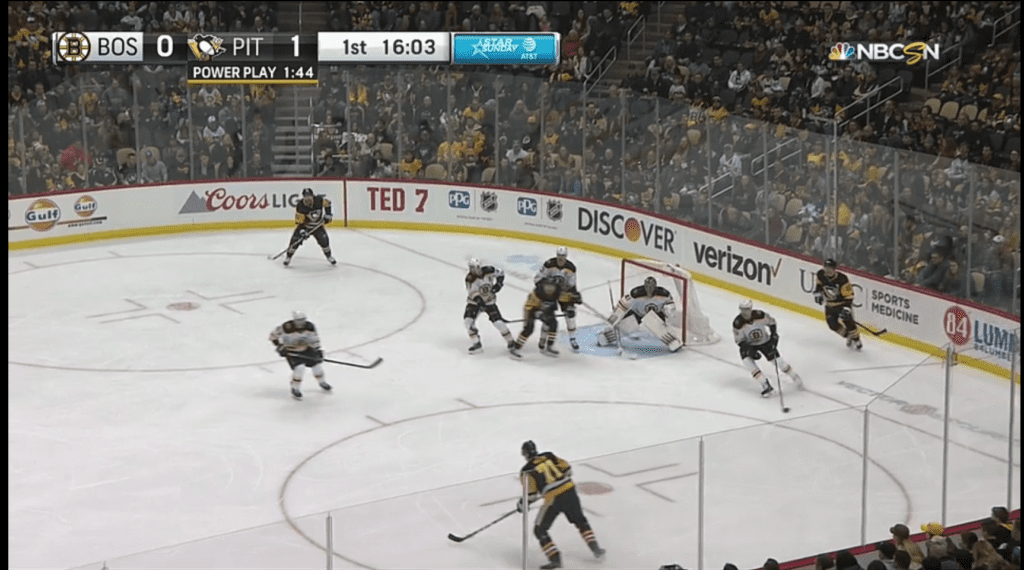
Easy shot, right? The Penguins have the net-front position, the lane is clear. Malkin needed to let it rip. He didn’t.
Here is what Malkin did instead.
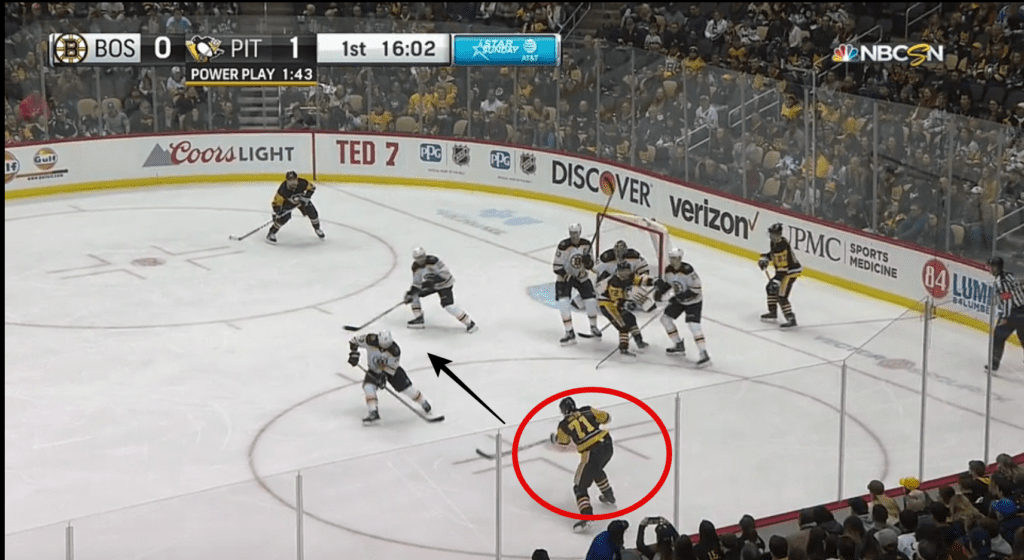
Predictably, Malkin’s cross-ice pass to the other half of “Malkin Kessel” was intercepted and cleared. This page could be filled with dozens of examples. The Penguins have the ability to scramble the PK with shots, but the chance to create the perfect play is too tempting.
2. Blood in the Water
The Penguins have spotted opponents 14 shorthanded goals. Most or all of those goals were easily preventable because they were the result of high forwards not covering their responsibilities or not supporting the puck to break out of their own zone. In return, confident penalty killing teams go after the Penguins; opposing PKs are taking more chances in hopes of being rewarded.
Below was an easy play. Penguins defenseman Justin Schultz went back to his zone to initiate the breakout but the Boston penalty kill was aggressive. The red arrow is the aggressive route which the Boston PK took. The blue arrow is the safe route to protect against the Penguins feared power play. Fewer teams are taking the blue arrow.
One shark begets two and the Penguins are forced to bring four players back to initiate the breakout sequence. It cost the Penguins time and speed through the neutral zone.
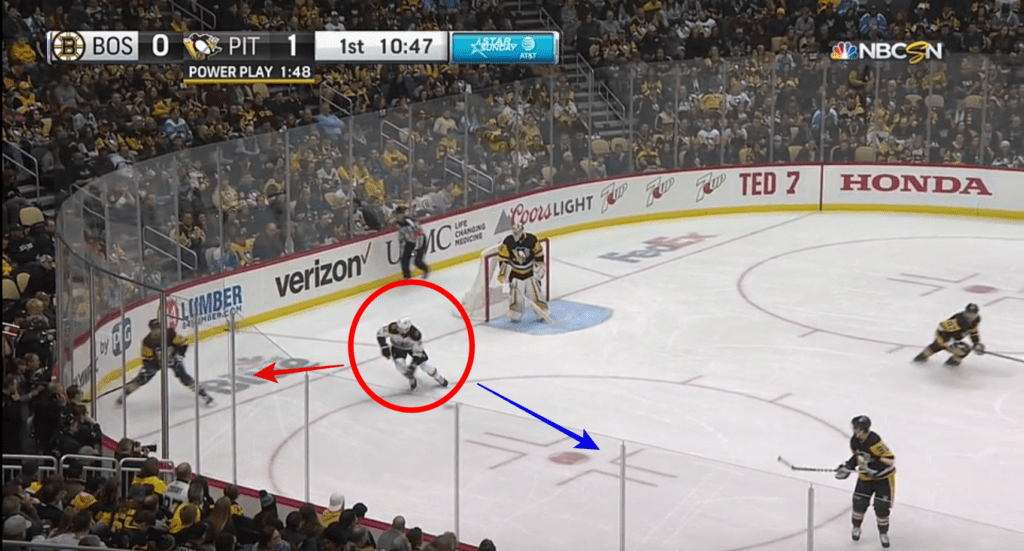
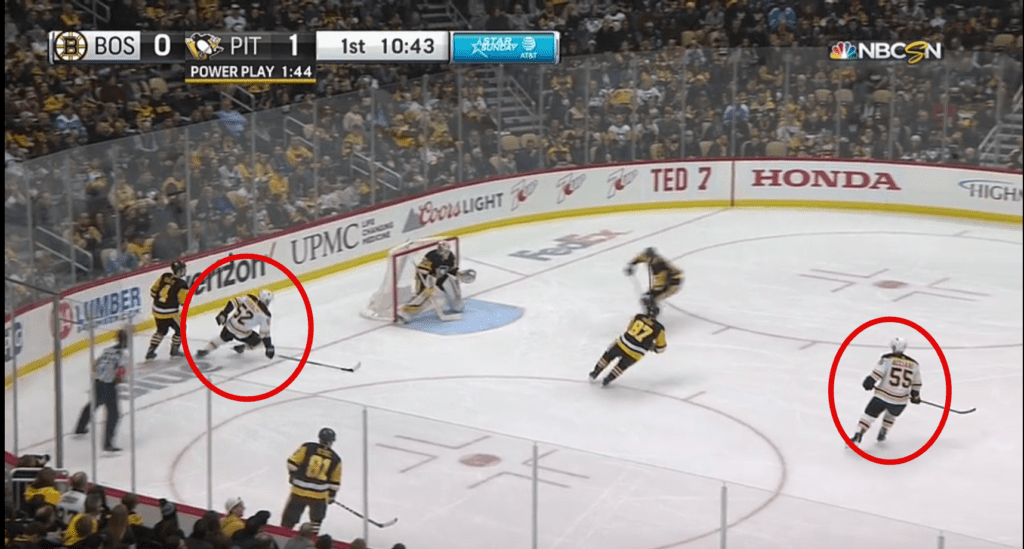
2B. Go For It
Note the Boston aggressiveness at the Penguins point, again. They bolted the zone before Schultz misplayed the puck. Teams watch film and they know what can be accomplished.
You’ll also notice the flatfooted power play watching the action. Schultz was isolated. Even if he kept the puck in the zone at the blue line, Marchand was going to run over him and take it. The Penguins were slow to recognize the threat and Marchand had a Grade A shorthanded chance at the end of the play.
Put this in Sullivan’s “Lack of Conscience” file.
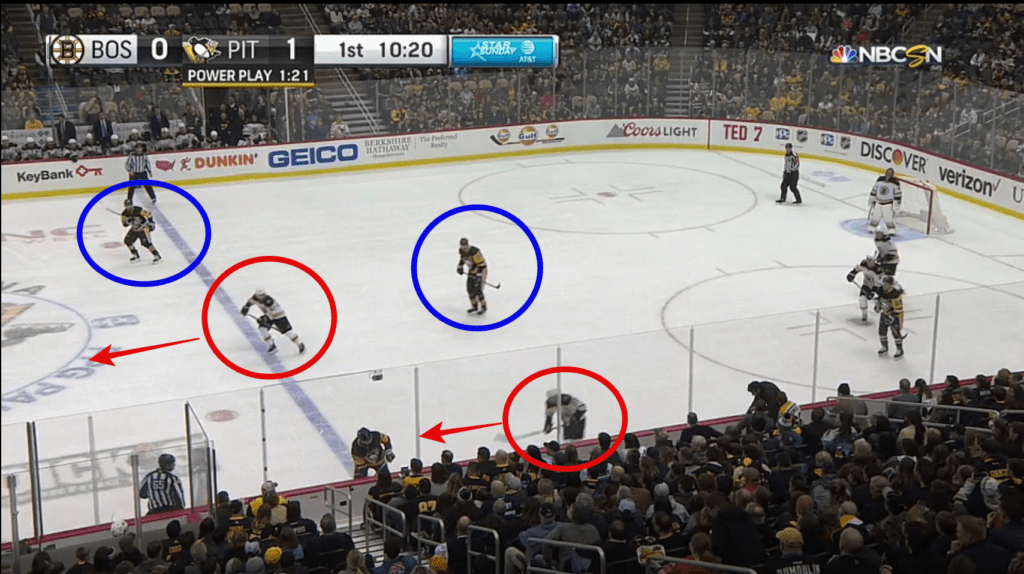
3. Blue Line Madness / Zone Entries
The frequent turnovers at the blue lines have haunted the Penguins this season. At best, those turnovers blunt offensive momentum. At worst, they’re another puck in the Penguins net. As the top power play runs through Malkin and Kessel, zone entries fall heavily on the duo.
Boston stacked the neutral zone (the red square full of defenders) and the blue line with defenders in yet another aggressive move. In the first picture, you can see Kessel’s options. In the second picture, you can see where the play went wrong.
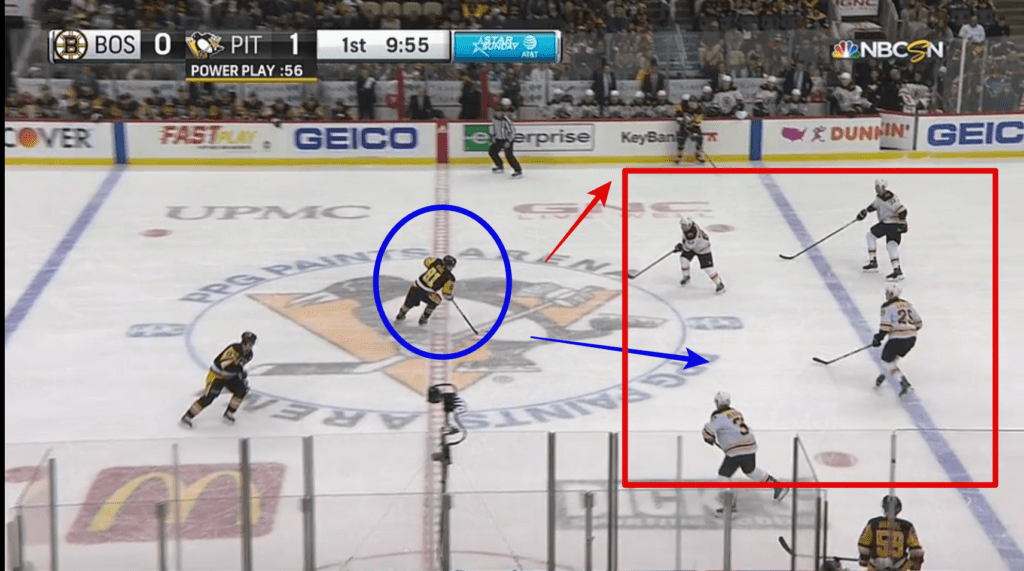
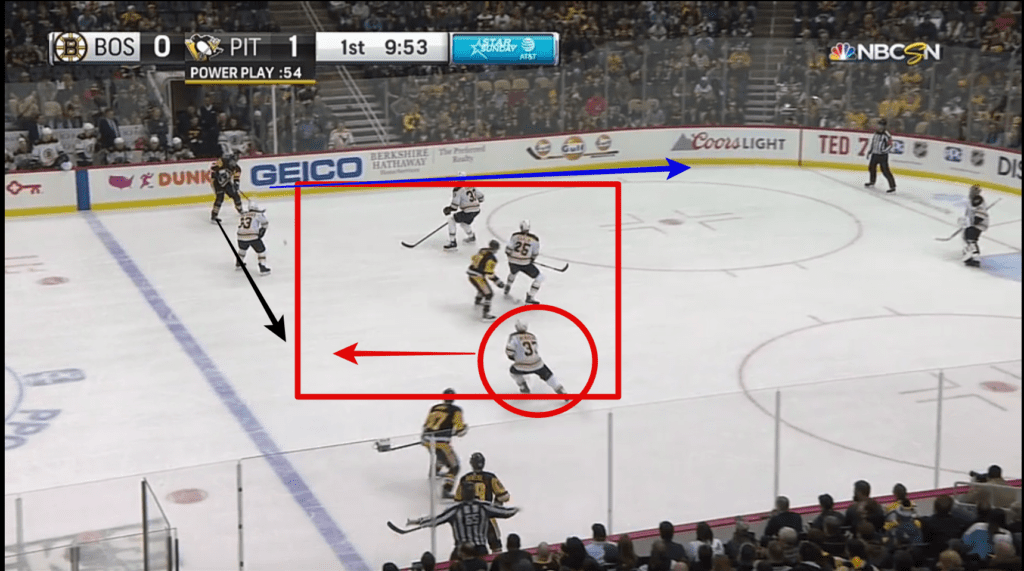
As you can see, here is another missed opportunity to set up the power play or pressure the PK. The black arrow is the cross-pass Malkin attempted at the blue line. The blue arrow is one potential path for Malkin or the puck. Premier Boston center Patrice Bergeron was only too happy to see Malkin attempt the cross-ice pass.
Boston properly clogged the center of the ice and forced the Penguins to choose the simple play. The Penguins declined and thus the Penguins top unit was broken up.
Despite the struggles, the Penguins power play still ranks sixth in the NHL at 24.7 percent. They’re getting goals from the first and second unit but they’re not getting consistent pressure. Nor have they been getting enough good looks, recently.
Bonus: Power Plays Don’t Win Stanley Cups
We’ve chatted about the hockey corollary on the Live Chats, but it bears writing, too. Power plays don’t win Stanley Cups very often. If a team is relying on the officials to provide offensive chances, that team won’t last long. Teams must score 5v5 goals and kill penalties, which good teams do.
Typically, each team gets a couple or a few power plays in a playoff game. Given the heightened desperation and shot blocking of the playoff atmosphere, power-play goals are more difficult to score.
The Penguins must stop yielding shorthanded goals and stop giving away momentum with sloppy power plays. If they can generate momentum with shots and second chances, the power play goals will follow and the shorties will recede.
Even if the goals don’t follow at the same rate, momentum and the fear the Penguins will score on the next one is a good consolation prize.












